War Memorial Hospital
856 Brighton Road, Purley, Surrey CR8 2YL
Acute. Later, geriatric. Currently OPD only.
Located some four miles south of the Mayday Hospital, the Purley and District Cottage Hospital was built during the years 1906-1908 and was officially opened in 1909 by Princess Christian. The 2-storey building had 7 beds.
The Hospital, although it served Purley and Coulsdon, was not actually in Surrey but just within the point of a V-shaped salient of the County Borough of Croydon; it had been the only available site.
After WW1, in August 1919 an arrangement was made for the local Red Cross Voluntary Aid Detachment to erect a army surplus hut it had purchased for use as a Curative Post for discharged servicemen in the grounds of the Hospital. However, because of difficulties with labour and transport, the hut was not ready until the end of 1919.
In return for allowing the hut to be built in its grounds, the Hospital was allocated two-fifths of the hut, which was 100 ft long and 22 ft wide (30.3 metres by 6.7 metres). The Hospital's portion became offices and a 6-bedded ward with a bathroom. and was joined to the main building by a covered walkway.
The Red Cross portion contained a large room - 35 ft by 20 ft (10.6 metres by 6.1 metres) - and a doctor's consulting room, offices, a kitchen, a storeroom and a WC. Gas, electrical light, water and heating had been installed. The Red Cross provided massage and electrical treatments to ex-servicemen and to any out-patients in the locality. The Division and the Surrey County Council agreed that the hut could also be used as a TB dispensary.
In 1921 the Hospital was renamed the Purley and District War Memorial Hospital. It had been twice extended, with the addition of two 2-storey ward blocks - one containing the Children's Ward with 10 beds and a female ward with 8 beds, and the other a male ward and a female ward, each with 10 beds, and 15 private patient rooms on both floors.
On 30th April 1926 the Curative Post closed.
In 1938 an Appeal was launched to raise £45,000 to extend the Hospital. The new buildings would provide 20 extra beds and 9 private patient rooms, a 15-bed maternity home, an Out-Patients Department, living quarters for the Resident Medical Officer, an extension to the Nurses' Home, and a new kitchen and boiler room.
Work began on the first phase of the scheme and the new kitchen was completed in 1939, just at the outbreak of WW2. The boiler house and the installation of the heating system, and the Out-Patients Department (with the nurses' Dining Room on the floor above) were completed in 1940, so that the latter could be used as a First Aid Post. The work had cost £25,000.During WW2 the Hospital became part of the Emergency Medical Scheme. In 1940 it had 51 beds - 39 ordinary, 6 maternity (at 3.5 guineas (£3.67) a week) and 6 private rooms at 5 or 7 guineas (£5.25 or £7.35) a week. A large number of nursing staff were required because of the small wards, namely a Matron, 5-6 staff nurses and 13 probationers.
At the end of the war the Hospital consisted of the original 2-storey building, which was the administration block, with the two 2-storey ward blocks behind and parallel to it, and the 1940 Out-Patients building. The nursing and domestic staff were housed in a separate building at the back of the site.
The medical staff comprised 9 local General Practitioners (GPs). Ten honorary consultants had also been appointed, but did not visit regularly, except for the orthopaedic surgeon who held a weekly clinic. The Hospital served a population of 54,000, mainly from Coulsdon and Purley.
In 1946 the Management Committee considered extending the Hospital to 100 beds, but the L-shaped 2.5 acre site contained buildings which had been added piecemeal, making it less than ideal for logical expansion.
The Hospital joined the NHS in 1948 under the control of the Croydon Group Hospital Management Committee, part of the South West Metropolitan Regional Hospital Board.
In 1954 it had 53 GP beds. Since the appointment of a Resident Medical Officer (RMO), the GPs themselves rarely attended, leaving their patients to the care of the RMO and the honorary consultants from Croydon.
In 1962 the Hospital had 55 beds in small wards of about 10 beds each and a maternity ward of 8 beds. The Out-Patients Department contained a Casualty Department with its own operating theatre (which was run by two part-time female doctors), an X-ray Department and a Physiotherapy Department, but no accommodation for out-patient clinics. The main out-patient work was treating casualties and patients referred for X-ray examination or physiotherapy. There was a purpose-built Nurses' Home and a converted house which served as a Maids' Home.
By 1966 there were 59 beds for acute and maternity cases.
In 1984 the Hospital became a geriatric hospital with 57 beds, but still operated a general Out-Patients Department.
By 1996 the Hospital was under the control of the Mayday Healthcare NHS Trust.
When the Jubilee Wing of the Mayday Hospital opened, the in-patients were transferred there and the wards closed (although the 2009 Medical Directory lists that it has 42 beds for elderly patients).
Present status (March 2008)
In 2001 it had been agreed that the Hospital, which consisted of a number of buildings and cabins of varying size, should be rebuilt as a Health Centre to provide diagnostic and out-patient services. The project would be a joint venture between the Mayday Healthcare NHS Trust (now renamed the Croydon Health Services NHS TRust), Croydon Primary Care Trust (now NHS Croydon), the South London and Maudsley NHS Trust, the London Ambulance Service, Relate, the St George's Healthcare NHS Trust and Croydon Social Services.
The plan involved demolition of the current buildings and the erection of a 5-storey healthcare facility at the northeast corner of the site, as well as a 6-storey building containing retail units on the ground and first floors, with 46 single-bedroom, 34 two-bedroom and 3 studio apartments on the floors above. The site would also contain four 4-storey apartment blocks, providing a total of 64 two-bedroom apartments. In addition, the 1.25 hectare site would have 194 parking spaces.
Planning permission was granted in 2004 for a £10m healthcare facility to be built.
Update: November 2010
The Hospital is still in operation, providing only diagnostic and out-patients care. No further progress had been made concerning redevelopment of the site. Translloyd Developments Ltd, the company that owns most of the site, has been unable to raise the money for the project. It had hoped to build shops and residential units to finance the health facility, but cannot attract a flagship retailer to do so.
Update: January 2013
In December 2012 the Croydon Health Services NHS Trust began a £11m refurbishment of the Hospital, using government funding, to provide improved out-patient and diagnostic services. It is proposed to convert the disused ward areas into clinics and GP surgeries.
While the work is going on, the out-patient clinics and support services have moved to other locations. However, a nurse-led Urgent Care Centre remains on site.
The work is expected to be completed by June 2013.
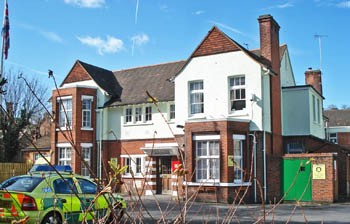
The original 'cottage style' building on the south part of the site was erected in 1909 (above and below).
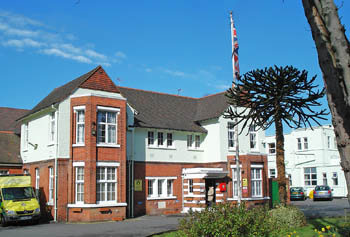
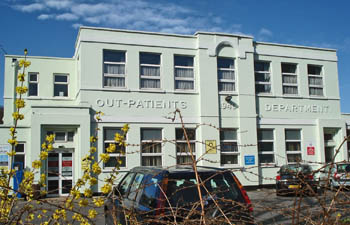
The Out-Patients Department on the north part was completed in 1940.
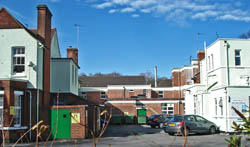
The ward blocks are towards the rear of the site.
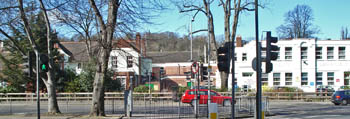
Seen from across Brighton Road, the original Hospital buildings are on the left and the Out-Patients Department on the right, with the ward blocks in between.
Update: January 2013

Work had begun on the site.
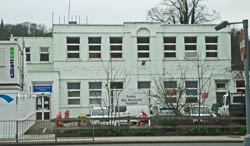
The Out-Patients Department contains the Urgent Care Centre.
http://hospitalshistory.multiply.com
http://postcardstudies.blogspot.com
http://services.parliament.uk
www.croydonobservatory.org
www.geograph.org.uk
www.nhs.uk
www.thisiscroydontoday (1)
www.thisiscroydontoday (2)
www.thisiscroydontoday (3)
www.thisiscroydontoday (4)
Return to alphabetical list
Return to home page